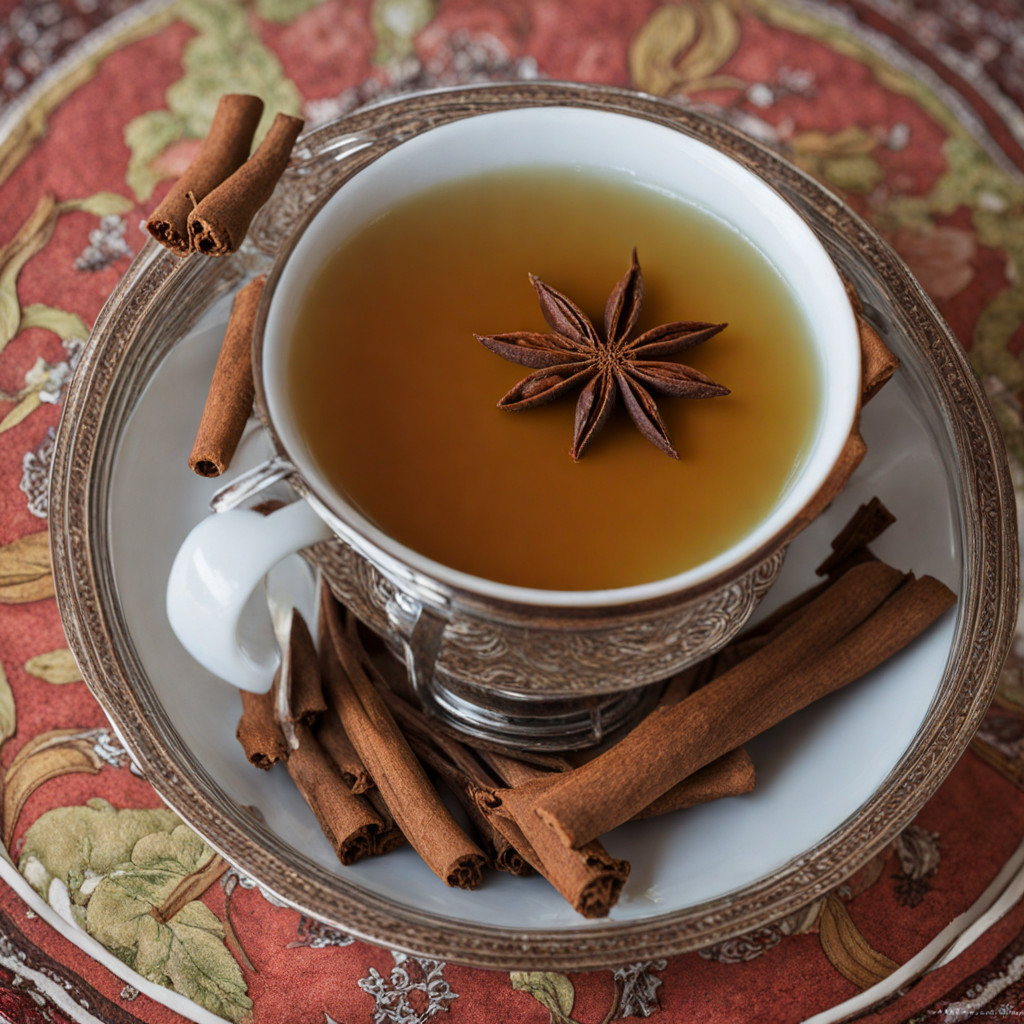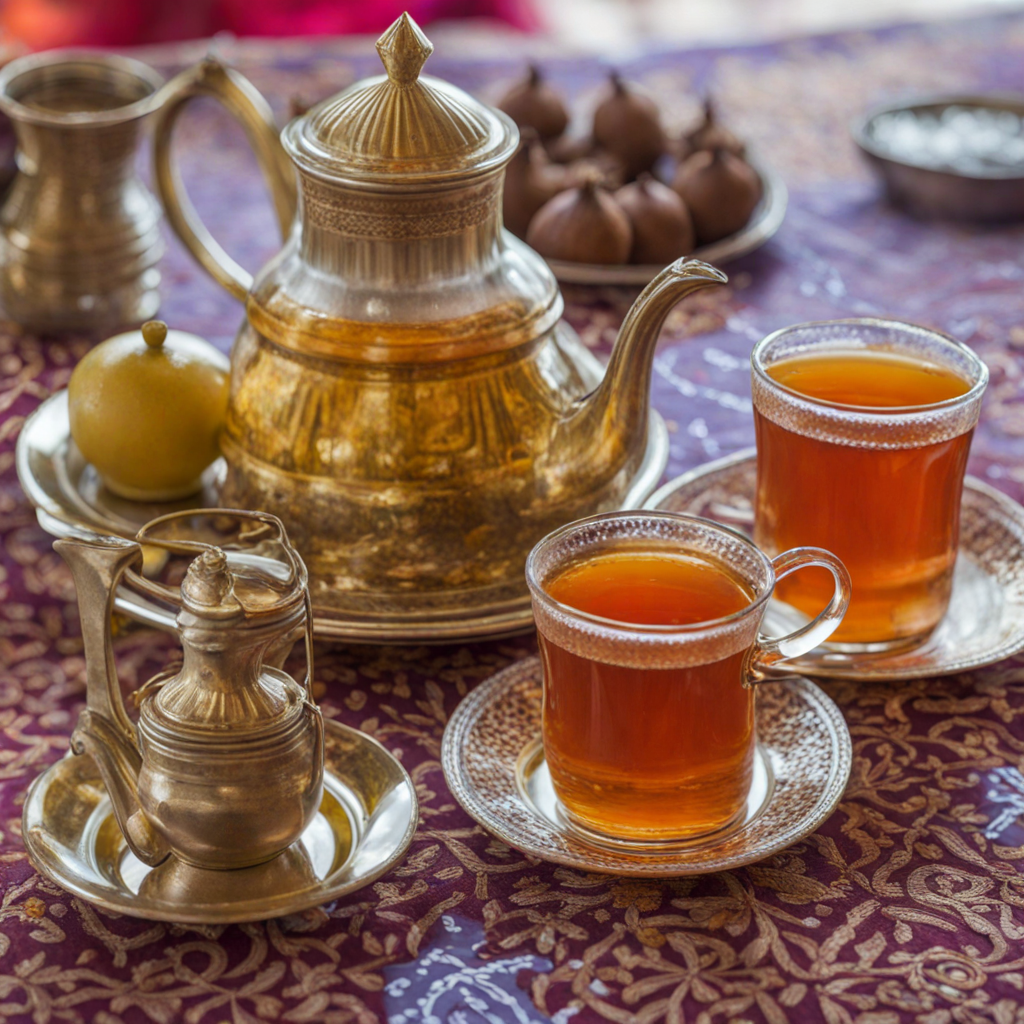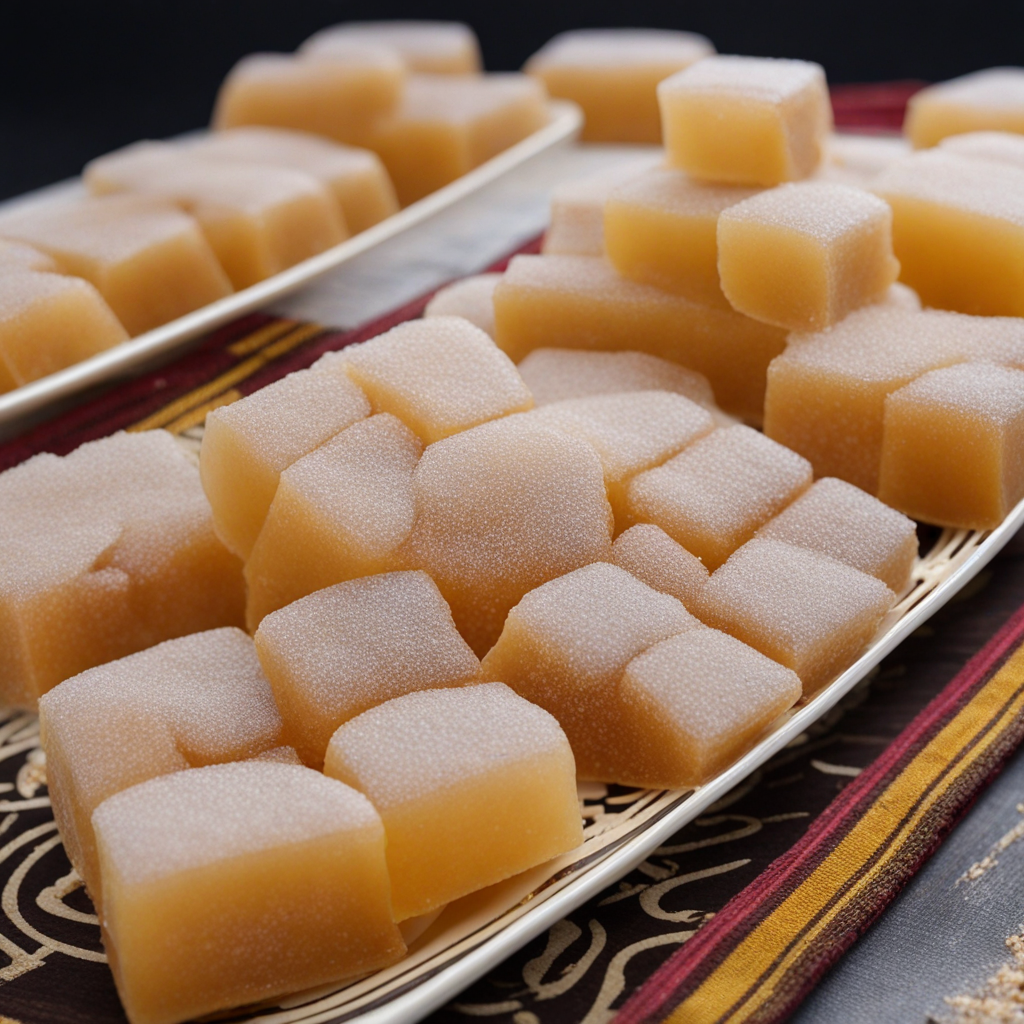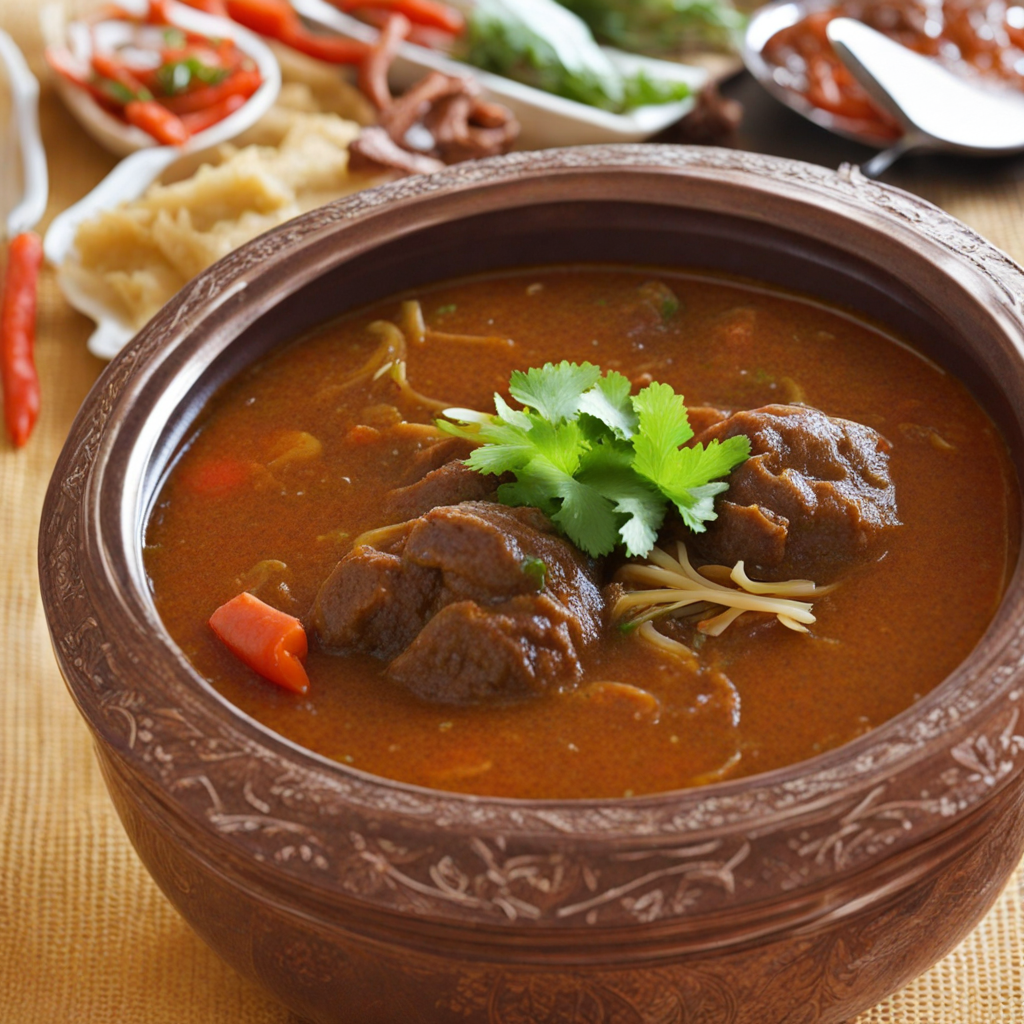Shaah
Shaah is a traditional Djiboutian beverage that elegantly combines the rich flavors of spices and tea, creating a unique and aromatic experience. This drink typically features black tea as its base, infused with a medley of spices such as cardamom, cloves, and cinnamon. The addition of sugar enhances its sweetness, balancing the robust flavors of the spices. The preparation of Shaah is often a ceremonial affair, with the tea brewed in a distinctive pot, allowing the spices to steep thoroughly and release their full essence into the brew. The texture of Shaah is smooth, and the spices lend a warm, inviting aroma that fills the air, making it a comforting choice for both casual gatherings and special occasions. In Djibouti, it is common to serve Shaah with traditional sweets or snacks, creating a harmonious pairing that enhances the overall tasting experience. The drink is often enjoyed in social settings, symbolizing hospitality and the rich cultural heritage of the region. One of the standout features of Shaah is its versatility; it can be served hot or cold, depending on the preference and the occasion. The complex interplay of flavors makes every sip a delightful journey, inviting drinkers to savor the layers of taste that unfold. For those looking to explore new culinary horizons, Shaah offers a refreshing perspective on tea, with its distinctive spices providing a taste of Djibouti's vibrant culinary landscape.
How It Became This Dish
The History of Shah: The Cultural Elixir of Djibouti Introduction In the heart of the Horn of Africa, nestled between the Red Sea and the Gulf of Aden, lies Djibouti, a nation that serves as a vibrant intersection of cultures, traditions, and culinary practices. Among its many culinary treasures, one item stands out as both a beloved beverage and a cultural symbol: Shah, the spiced tea that embodies the essence of Djiboutian hospitality, warmth, and communal life. This history of Shah delves into its origins, cultural significance, and its evolution over time, revealing how this simple beverage has become a cornerstone of social life in Djibouti. Origins of Shah The roots of Shah can be traced back to the ancient trade routes that crisscrossed the region, linking the Arabian Peninsula, Africa, and beyond. Tea, originally discovered in China, made its way to the Middle East, and subsequently to East Africa, through trade. By the 19th century, tea had become an integral part of daily life in various East African communities, including Djibouti. The word "Shah" itself derives from the Arabic term for tea, "شاي" (pronounced "shay"). The infusion is typically made using black tea, which was introduced to the region through maritime trade. However, the Djiboutian interpretation of Shah is distinctive, often infused with native spices and flavors that reflect the diverse cultural tapestry of the nation. Cultural Significance of Shah In Djibouti, Shah transcends mere refreshment; it is a symbol of hospitality and social connection. The act of preparing and serving Shah is laden with ritual and tradition. It is customary to offer tea to guests, embodying a deep-rooted cultural practice that emphasizes generosity and warmth. The preparation of Shah is often a communal activity, with families gathering to brew the tea and share stories, laughter, and companionship. Shah is also a vital part of various cultural ceremonies, from weddings to religious celebrations. During Ramadan, the beverage becomes especially significant as it is often served after the fast to break bread with family and friends. The soothing warmth of Shah, coupled with its unique spices, provides comfort and solace during the holy month, enhancing communal bonds and shared experiences. Moreover, Shah has become a conduit for expressing regional identity. Djibouti's diverse ethnic groups—such as the Somali, Afar, and Arab communities—each contribute their own flavors and traditions to the preparation of Shah. For instance, the Somali version might incorporate spices like cardamom and cloves, while other variations may include ginger or cinnamon. This adaptability reflects the nation’s cultural richness and the blending of influences that characterize Djibouti's heritage. Development Over Time The evolution of Shah over time mirrors the broader socio-political changes in Djibouti. During the colonial period, Djibouti was a French territory known as French Somaliland. This era brought further diversity to the local cuisine, including the tea-drinking culture. The French influence introduced new techniques and ingredients, leading to a fusion of flavors in the preparation of Shah. In contemporary Djibouti, Shah continues to evolve, with modern interpretations and presentations. While traditional methods remain cherished, the beverage has found its way into cafes and restaurants, often served alongside an array of pastries and snacks. The burgeoning café culture in urban centers has made Shah more accessible, allowing both locals and tourists to experience this cultural staple in various settings. The globalization of food culture has also impacted the presentation of Shah. With the rise of social media, especially platforms like Instagram, the aesthetic presentation of Shah has gained importance. Creative garnishes, intricate serving vessels, and visually appealing setups have become part of the experience, appealing to a younger generation while retaining the essence of the beverage. Furthermore, the health benefits associated with tea have led to a renewed interest in Shah. Rich in antioxidants and known for its calming properties, the beverage has garnered attention as part of a wellness trend. This has resulted in a revival of traditional herbal infusions, with locals experimenting with regional plants and spices to enhance the health benefits of Shah, creating a blend that honors tradition while catering to contemporary tastes. Conclusion Shah is more than just a drink; it is a narrative woven into the social fabric of Djibouti. Its origins are a testament to the historical trade networks that shaped the region, while its cultural significance underscores the importance of hospitality and communal ties. The development of Shah over time reflects the nation’s resilience and adaptability, as it embraces both tradition and modernity. As Djibouti continues to navigate the complexities of globalization and cultural exchange, Shah remains a steadfast symbol of identity, connection, and warmth. Whether shared among friends on a sun-drenched terrace or served during a family gathering, Shah encapsulates the spirit of Djibouti—a land where flavors tell stories, and every cup is a bridge connecting the past with the present. In a world increasingly focused on individualism, Shah serves as a reminder of the power of shared experiences, making it not just a beverage, but a cherished ritual that binds people together. Through its rich history and cultural significance, Shah stands as a testament to the enduring legacy of hospitality and community in Djibouti, a nation defined by its ability to welcome others with open arms and a warm cup of tea.
You may like
Discover local flavors from Djibouti







